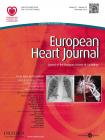
Prof. Emeritus Mervyn Gotsman and Prof. Israel Gotsman of Hadassah Hospital’s Heart Institute have coauthored an article which appeared in the European Heart Journal, highlighting the fact that “between 1998 and 2012, mortality from cardiovascular disease in Israel has fallen from 162 to 80 per 100,000 residents–a decrease of 50 percent.”
Figure 1. Temporal trends in adjusted mortality rates by cause in Israel, 1998–2012. Data obtained from the official annual published data of the Israeli Central Bureau of Statistics 2015 website. http://www1.cbs.gov.il/briut/new/tab3b.xls (10 August 2015)].
 “The number one killer is being contained,” the authors report. They explain that cardiovascular death includes acute myocardial infarction, ischemic heart diseases and arteriosclerosis, cerebrovascular diseases, diabetes mellitus, and hypertensive disease. Discussing the reasons for this dramatic plunge in cardiovascular mortality, the authors credit the Israel Heart Society for introducing, publicizing, and teaching prevention of atherosclerosis through lifestyle modification, as well as launching national campaigns against smoking, obesity, diabetes, and hypertension. In addition, they cite the liberal use of statins to achieve the new lipid goal targets, along with Israel’s careful investigation of patients with chest pain.
“The number one killer is being contained,” the authors report. They explain that cardiovascular death includes acute myocardial infarction, ischemic heart diseases and arteriosclerosis, cerebrovascular diseases, diabetes mellitus, and hypertensive disease. Discussing the reasons for this dramatic plunge in cardiovascular mortality, the authors credit the Israel Heart Society for introducing, publicizing, and teaching prevention of atherosclerosis through lifestyle modification, as well as launching national campaigns against smoking, obesity, diabetes, and hypertension. In addition, they cite the liberal use of statins to achieve the new lipid goal targets, along with Israel’s careful investigation of patients with chest pain.
Enumerating the medical interventions that are responsible for saving lives of patients with heart disease, they specify: the very early management of acute heart attacks–initially with thrombolysis (dissolving dangerous clots in blood vessels) and now with immediate interventional procedures within two hours of the patient’s pain onset; the extensive use of emergency ambulance services throughout the country, including rural areas; specialized intensive care units in all the regional hospitals under the care of experienced cardiologists; use of the new anticoagulants; the careful management of cardiogenic shock; programs aimed at preventing sudden death; percutaneous coronary angioplasty for patients with significant coronary artery disease; the use of the new generations of stents; the judicious use of coronary artery bypass grafting; the appropriate use of national trans-telephonic monitoring for patients with chest pain and palpitations; interventional procedures for arrhythmias; the free use of pacemakers and implantable defibrillators; the early treatment of valvular disease by surgery and interventional procedures; and early corrective surgery for congenital heart disease by experienced surgeons.
Mortality Rates by Gender
Figure 2 Cardiovascular Mortality by Gender in Israel
 Commenting on the gender comparison in Israel’s cardiovascular disease mortality, Dr. Donna Zfat-Zwas, Director of the Hadassah Medical Center’s Linda Joy Pollin Cardiovascular Wellness Center for Women, notes: “In Israel we are proud that we don’t have the gender gap that they see in America, where for unclear reasons, more women die each year of heart disease than men. At the same time, we know that women in Israel who experience a heart attack are three times more likely to die than men, and some of that results from the fact that they arrive at the hospital too late—-on average more than an hour later than the men. At the Pollin Center, we are working hard to increase the awareness of women about their risk of heart disease, and to recognize the signs and symptoms. We have set ourselves the goal of decreasing the amount of time it takes for a woman to seek help, and that way we anticipate a significant decrease in mortality from heart disease in women.”
Commenting on the gender comparison in Israel’s cardiovascular disease mortality, Dr. Donna Zfat-Zwas, Director of the Hadassah Medical Center’s Linda Joy Pollin Cardiovascular Wellness Center for Women, notes: “In Israel we are proud that we don’t have the gender gap that they see in America, where for unclear reasons, more women die each year of heart disease than men. At the same time, we know that women in Israel who experience a heart attack are three times more likely to die than men, and some of that results from the fact that they arrive at the hospital too late—-on average more than an hour later than the men. At the Pollin Center, we are working hard to increase the awareness of women about their risk of heart disease, and to recognize the signs and symptoms. We have set ourselves the goal of decreasing the amount of time it takes for a woman to seek help, and that way we anticipate a significant decrease in mortality from heart disease in women.”
In terms of mortality of both men and women, Drs. Gotsman caution that they are not certain about the quantitative contributions of each of the multiple improvements cited and allow for the possibility that “this excellent outcome may also be a consequence of universal availability of affordable sick funds for the entire population, irrespective of race, color, and creed, in a heterogeneous population comprising the three Abrahamic religions.”
By the same token, they emphasize “the drive of the Israel Heart Society and Israel’s Ministry of Health to provide the most modern facilities available 24/7 in the outpatient clinics and hospitals.”
While stating that there is more to be done and offering advice as to how cardiovascular specialists can cause the trajectory of death to decline even further, they conclude: “Cardiovascular advances and developments are like peeling an onion. As one layer is removed, a new one appears and requires careful evaluation, management, and implementation.”


